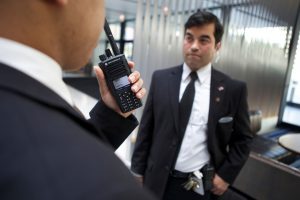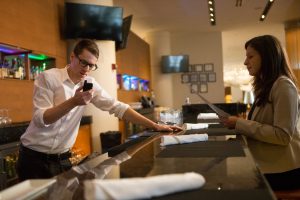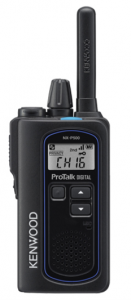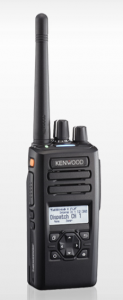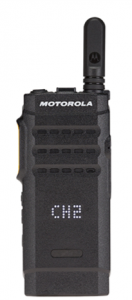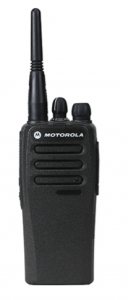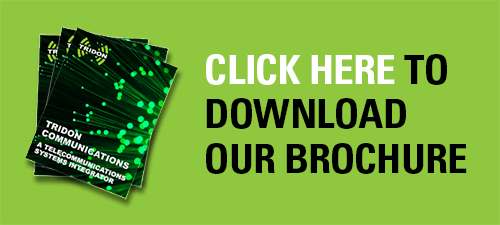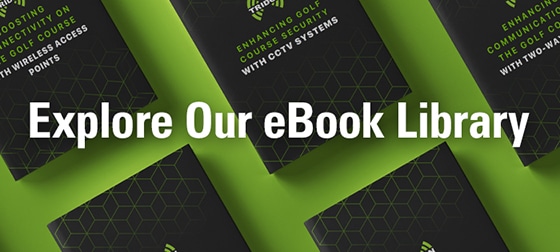If you’d like to talk about switching to digital two-way radios, Contact Us.
Or, keep reading to find out more.
Alberta’s hospitality sector is diverse; it covers everything from hotels, casinos, and restaurants to outdoor concerts, festivals and adventure tourism. Because of all the options available, creating a memorable guest experience is key to a successful operation that keeps visitors coming back, season after season.
Having excellent lines of communication between all members of your team is a major factor in ensuring your guests have the best experience possible, and two-way radios are the tool the hospitality industry has turned to for years. And, as the technology continues to improve, more of Alberta’s tourism and hospitality operations are switching from analog to digital two-way radios.
Here are just a few of the problems tourism and hospitality operators are facing, and how digital two-way radios are solving them.
The Problem: Poor communication over long distances
The Lake Louise and Sunshine Village ski resorts are among the largest in Alberta. With staff and guests spread out over such a wide area, loud and clear communications are needed to ensure guest safety just as much as a day of excellent skiing or snowboarding.
However, the further an analog signal travels from the transmitter, the more it deteriorates. Voice messages get more distorted and harder to understand and, at the edges of your coverage area, become almost unintelligible. This means calls will have to be repeated multiple times, leaving staff frustrated and guests underserved.
The Solution: The enhanced range and audio quality of digital two-way radios
Digital radios offer a massive improvement in this regard. They provide the same consistent audio quality throughout their coverage area. That means your team will be able to receive loud and clear voice messages, even at the outermost edges of your coverage area. That means better overall communication, a faster response to guest needs, and better guest experiences.
The Problem: Batteries that can’t last through long shifts
Hotels, casinos, and resorts in Edmonton run 24/7, and a dead battery can lead to a frustrating delay in communicating with team members and getting guests the support, they need.
Event staff members are faced with a similar challenge. While they may not work around the clock, they are constantly on their feet and on the move. If a battery dies them in the middle of a shift, tracking down a spare will take time better spent addressing the needs and inquiries of guests.
In short, your team needs a battery that works as long a shift as they do.
The Solution: The energy efficiency of digital two-way radios
While digital and analog radios use about the same amount of power in standby mode, digital radio is far more energy-efficient when transmitting. In fact, battery life is extended by up to 40%, with some models capable of operating a full 24 hours before needing a recharge or replacement. If you want your team to have radios that can last an entire shift, digital radios are your best bet.
Ready to talk solutions? Have questions? Contact Us today,
The Problem: Maintaining and improving your two-way radio system
Analog two-way radios have been around since the 1930s, so it’s a safe bet that many in Alberta’s tourism and hospitality industry are familiar with them. However, since the early 1990s, manufacturers like Motorola Solutions and JVC Kenwood have been pouring resources into developing digital radios, leaving fewer and fewer available for analog two-way radio systems.
What this effectively means is that analog radios are about as good as they are going to get, leaving little opportunity to measurably improve the system some hospitality operations have in place. The shift in focus from analog to digital also presents a problem in maintaining older (legacy) analog systems. As these systems continue to age, finding replacement parts will become increasingly difficult, as will finding manufacturer support. This could leave a business with a radio system that barely functions, making it harder to communicate and serve guests to their satisfaction.
The Solution: The superior features, functionality, and software that comes with a digital radio
As we mentioned above, manufacturers are pouring resources into improving digital two-way radios. The hardware is rapidly improving, and so are the software applications.
Applications like ‘Lone Worker’ help your team members stay safe and connected when working on their own, be it cleaning hotel rooms, patrolling a parking garage or festival grounds, or performing maintenance work. Work Order Ticketing applications allow team leaders and managers to assign jobs using a two-way radio, and for teams to take them on and report when they are completed. These applications can be easily updated and quickly updated, too, so your team gets the benefit of the latest software.
In addition to better audio quality and battery life, digital radios can also be paired with a range of Bluetooth technology. Communicating hands-free has long since been an option with two-way radios, but digital means you can go cordless, as well. And of course, finding replacement parts or technical support – be it from the manufacturer or your local supplier – is much easier.
What this means for hospitality is simple, reliable communications that keep your team safe and on track. It means they can coordinate their activities and provide your customers with the ideal guest experience.
The Problem: The cost of upgrading to a digital radio system
Digital radios are, at least for the moment, more expensive than their analog predecessors. Even with the advantages they provide, some tourism and hospitality operators may hesitate to give up their analog radio system when they review the cost of going digital.
The Solution: Gradually transition your system to digital
You don’t need to trade in your analog system for digital all at once. Motorola’s MOTOTBRO line and JVC Kenwood’s NEXEDGE offer radios and repeaters that can transmit and receive in both analog and digital. That means you can upgrade your system in phases, giving your budget some breathing room. If this sounds like the approach you’d like to take, be sure to talk to the experts at Tridon so we can get you new equipment that’s compatible with your current system.
With digital two-way radios improving how your team communicates and responds to the needs of your guests, the goal of creating an ideal guest experience is much easier to attain.
If you’d like to talk to one of our experts, Contact Us today.
Or, keep reading to look at digital two-way radios that are already supporting Alberta hospitality businesses.
Kenwood NX-P500
Kenwood ProTalk NX-P500 is a UHF, digital, business two-way radio with dual-mode NXDN and FM analog capability in a very compact package. Designed for education, hospitality, restaurant and retail, NX-P500 puts powerful performance and versatility in a small, lightweight profile for instant communications between your employees at the push of a button.
Kenwood NX 3220/3230
This versatile handheld radio supports both NXDN and DMR digital protocols as well as mixed digital & FM analog operation, enabling it to serve with distinction in a wide range of enterprise- and operation-critical applications. Compact yet designed with durability in mind, it’s packed with convenient features like Bluetooth® for hands-free operation and built-in GPS. Three different models are available: Full Keypad model with LCD, Standard Keypad model with LCD and a large 4-way D-pad and the Basic Model without LCD or keypad. Additionally, for expansion capability, a software license certification system facilitates extensive customization.
Motorola MOTOTBRO SL 300 Portable Two-Way Radio
The MOTOTRBO SL300 provides reliable push-to-talk communication for the mobile, everyday user in an ultra-slim and rugged profile. Whether you’re working in the field or at a black-tie event, the SL300 is boldly designed to keep you efficiently connected.
Designed for easy and intuitive use, the SL300 has a side volume control, dedicated power button, prominent push-to-talk button, and top toggle channel switch to enable quick one-hand access. Channel “fast toggle” allows users to scroll through 10 channels at a time. It features an Active View display with a matrix of LED lights behind the radio housing and “Range Max” technology, advanced radio design and patented antenna for enhanced range. Designed for easy and intuitive use and outfitted with the latest technology, the SL300 is the perfect work partner.
Motorola MOTOTBRO CP200d Portable Two-Way Radio
Simple and affordable, the CP 200d portable two-way radio connects your workforce efficiently and has the flexibility to grow with your business. By combining the best of two-way radio functionality with the latest analog and digital technology, the CP200d is perfect for the everyday user who wants to stay connected. Fully compatible with the MOTOTRBO family of radios, the CP 200d has superior audio quality, outstanding coverage, long-lasting battery life and more. You can also choose the analog-only model, which gives you great voice communications today, with a path to crisp and clear digital voice communications when you’re ready. All you will need is a simple software upgrade. Whatever your needs, the CP200d provides a simple, reliable, cost-effective communication solution to help work crews connect, coordinate and collaborate to get the job done right. Improve the efficiency of your operation with easy-to-use voice communication that’s right for you.
Tridon is a full solution Telecom Systems Integrator with CSA certification and licensed by APEGA. Our Engineering, Service and Tower Divisions collaborate with customers to build engineered solutions including communications systems design, tower inspections, and co-location, wireless broadband, fiber optic cabling, site security, and two-way radio communication.


